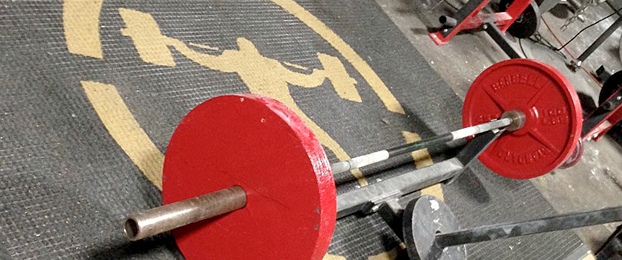
Many people see basketball as a game of explosiveness, quickness, and power. While this is all true, a focus on strength development is needed in order to achieve these feats on the court and avoid injury.
Players need overall lower body strength, single leg strength, upper back and shoulder strength, mobility, and a solid core. The game also subjects players to pounding and stress on the lower body. Strength movements are needed to protect the tendons, ligaments, and joints as well as maintain muscular balance. Along with strength movements, there should be a focus on hip and ankle mobility, tissue quality, and overall recovery.
The population that I generally work with consists of middle school and high school athletes. Here are the top five movements that I use to develop strength in my basketball athletes.
- Squats: Squats are the cornerstone of all of my athletic development programs. This exercise requires great posterior chain strength as well as core strength. I use variations of this lift depending on the age and experience of the athlete.We usually begin with a box squat to teach the glutes to fire and the hips to relax. From there, I use front squats because I really like the range of motion that it forces the athletes to achieve. We also cycle in back squats on a heavier day, single leg squats to mimic the single leg explosiveness required on the court, and overhead squats to challenge the shoulders, thoracic spine, and core.
- Deadlifts: Deadlifts are another great movement to train the posterior chain. I love this exercise because it hits the muscles throughout the mid and upper back and the traps. It’s also good for grip training.I use this exercise on alternating squat days and progress from blocks to the floor as the athletes get more mobile in their hips. My athletes love this exercise because they can usually pull some heavy weights, and they feel great when they finally “engage” their glutes.
- Overhead pressing: Many basketball movements happen over the head so my athletes always perform some variation of an overhead press. I don’t do much bench pressing with my basketball athletes because I want them to be strong and solid from an upright position.We start with a dumbbell press to develop balance and unilateral strength. Then, we move on to barbell overhead presses to develop a range of motion through the shoulders and stability in the rhomboids and trapezius. Many of the high school athletes that I see are weak in this area so it’s a great developer for them. As the kids progress, we throw some stretch bands on the bar to make the movement more dynamic as they go overhead. The focus of this movement is always a solid base and tight core, driving the weight hard over the head.
- Chin ups: My athletes have a love-hate relationship with the chin-up bar. They hate the movement at first because body weight movements are tough. Then, they learn to love it as they see the progress and development that they get in overall upper body strength and speed development. This is a great functional exercise in terms of posture and injury prevention with the physical aspect of the game.The first step for our chin-up movement is to have a jump stretch band under one knee until the athlete can comfortably perform several sets of eight. We then progress to a full body weight movement, focusing on driving the elbows down to the ribcage and squeezing the lat muscles hard at the top of the movement.
- Weighted abdominal work: Our weighted work generally consists of heavy jump stretch band pull-downs, medicine ball sit-ups, bungie cord sit-ups, and medicine ball rotations and throws (seated or standing). The extra implements force the athletes to really engage the core musculature and add a focus of athletic strength as opposed to lying on your back doing sets and sets of crunches.I want my athletes in the positions they will be in on the court with the ability to fight off defenders, not get knocked around. We achieve this through a lot of standing abdominal work and medicine ball throws. We keep the repetitions moderately low (10–12) to focus on quality work.
These movements and their variations have been very successful in developing general and sport-specific strength for my athletes. They are able to withstand the rigors of the season and avoid injury. Regardless of the level of athlete, strength development is of paramount importance to a successful athletic development program.
Elite Fitness Systems strives to be a recognized leader in the strength training industry by providing the highest quality strength training products and services while providing the highest level of customer service in the industry. For the best training equipment, information, and accessories, visit us at www.EliteFTS.com.








